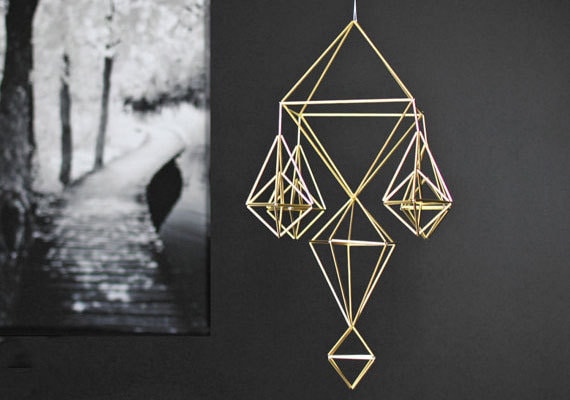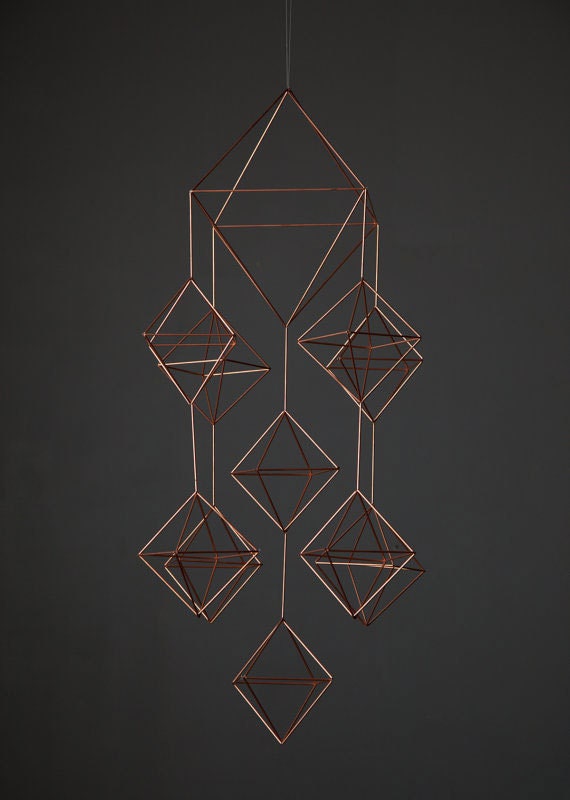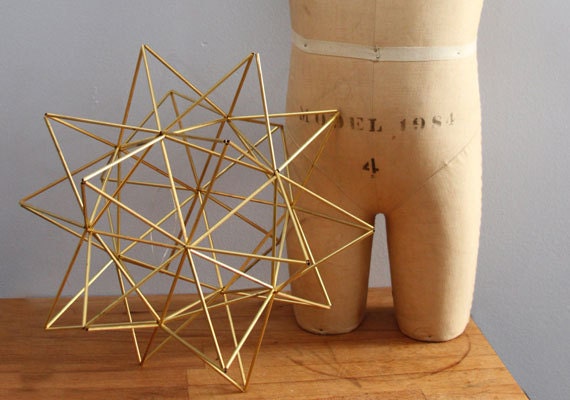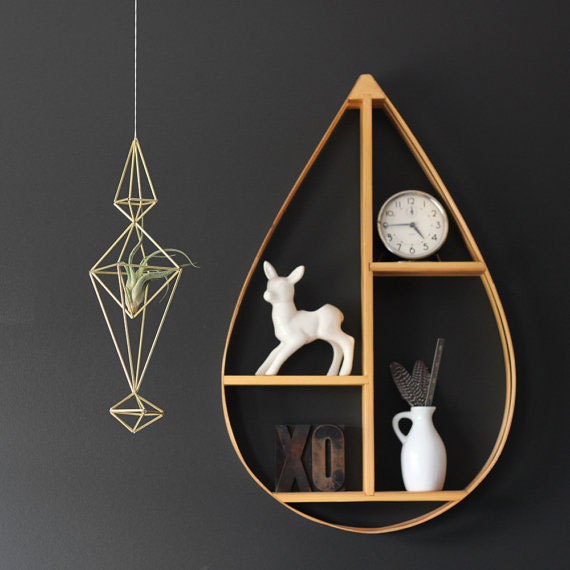Discover the ancient traditions behind the clean geometry and airy aesthetics of these unexpectedly modern mobiles.

I first learned of himmeli — traditional geometric mobiles usually made from straw — when Jeana Sohn profiled Los Angeles designer Momo Suzuki. The idea of spending a couple of hours after dinner like Momo, threading lengths of straw to create geometric forms, was very appealing. Unable to source suitable straw, I started making himmeli using plastic cocktail straws and coffee stirrers, and as expected found it a highly addictive pastime. I taught my friends’ children. I gave them away as gifts. For a while there, if you were taller than 5’5”, it was impossible to get into my house without first getting tangled up in an himmeli.
 %3Cp%3E%3Ca%20href%3D%22https%3A%2F%2Fwww.etsy.com%2Fshop%2FSpazzHappyLineDesign%22%20target%3D%22_self%22%3ESpazzHappyLineDesign%3C%2Fa%3E%3C%2Fp%3E
%3Cp%3E%3Ca%20href%3D%22https%3A%2F%2Fwww.etsy.com%2Fshop%2FSpazzHappyLineDesign%22%20target%3D%22_self%22%3ESpazzHappyLineDesign%3C%2Fa%3E%3C%2Fp%3EIn Finland, himmeli have been made for centuries, though folklorists are unclear when the tradition began; the word himmeli is believed to derive from the German word for heaven, himmel, which in turn derives from the Old Norse word himinn, variously translated as heaven or sky. Himmeli were traditionally hung over the table during the harvest festival to ensure a good harvest the following year – the more elaborate the himmeli, the more abundant the next year’s crop. The most beautiful himmeli were stored hanging from the rafters in Finnish attics from one Christmas to the next.
 %3Cp%3E%3Ca%20href%3D%22https%3A%2F%2Fwww.etsy.com%2Fshop%2FHRUSKAA%22%20target%3D%22_self%22%3EHRUSKAA%3C%2Fa%3E%3C%2Fp%3E
%3Cp%3E%3Ca%20href%3D%22https%3A%2F%2Fwww.etsy.com%2Fshop%2FHRUSKAA%22%20target%3D%22_self%22%3EHRUSKAA%3C%2Fa%3E%3C%2Fp%3ETraditionally, himmeli are made from specially selected and prepared straw in an octahedron, an eight-sided polyhedron. The straws must be straight, clean and unblemished; this requires advance planning and preparation work well before the Christmas season to ensure beautiful and structurally sound mobiles. These requirements speak also to concerns beyond mere beauty or durability – the requirements sound very much like those for any offering to the gods, such as first fruits, grain offerings, and sacrificial lambs – the offering must be perfect. That himmeli are still made in Finland (and similar mobiles known as pajaki in Poland) is testament to the remnants of old agrarian traditions that have become incorporated into the more modern celebration of Christmas that has largely superseded older harvest/midwinter festivals.
 %3Cp%3E%3Ca%20href%3D%22https%3A%2F%2Fwww.etsy.com%2Fshop%2FSpazzHappyLineDesign%22%20target%3D%22_self%22%3ESpazzHappyLineDesign%3C%2Fa%3E%3C%2Fp%3E
%3Cp%3E%3Ca%20href%3D%22https%3A%2F%2Fwww.etsy.com%2Fshop%2FSpazzHappyLineDesign%22%20target%3D%22_self%22%3ESpazzHappyLineDesign%3C%2Fa%3E%3C%2Fp%3ETheir continuance is also testament to an aesthetic that appeals to modern makers and consumers. A number of skilled makers sell beautifully proportioned himmeli on Etsy, most notably, Melissa Hruska of HRUSKAA and Megin Sherry of me and she by megin sherry, who both make mobiles constructed from lengths of cut brass and plastic. Melissa writes, “Although their tradition is to be displayed during the holidays, I find their modern aesthetic to be the perfect minimalist décor year round.”
 %3Cp%3E%3Ca%20href%3D%22https%3A%2F%2Fwww.etsy.com%2Fshop%2Fmeginsherry%22%3Emeginsherry%3C%2Fa%3E%3C%2Fp%3E
%3Cp%3E%3Ca%20href%3D%22https%3A%2F%2Fwww.etsy.com%2Fshop%2Fmeginsherry%22%3Emeginsherry%3C%2Fa%3E%3C%2Fp%3EMegin, who grew up outside of Philadelphia, Pennsylvania, in an area rich with German/Pennsylvania Dutch folk art traditions, sees many connections between the clean lines of modernist, geometric forms and traditional craft forms: “I think there’s a huge overlap between the clean lines of modernist design and the essentialized patterns and designs of those folk communities – Moravian stars, bold geometric quilts, barn hex signs. [As a child] I used to take popsicle sticks and glue them together or I would use toothpicks and marshmallows to make himmeli-esque designs.”
 %3Cp%3E%3Ca%20href%3D%22https%3A%2F%2Fwww.etsy.com%2Fshop%2FHRUSKAA%22%20target%3D%22_self%22%3EHRUSKAA%3C%2Fa%3E%3C%2Fp%3E
%3Cp%3E%3Ca%20href%3D%22https%3A%2F%2Fwww.etsy.com%2Fshop%2FHRUSKAA%22%20target%3D%22_self%22%3EHRUSKAA%3C%2Fa%3E%3C%2Fp%3EHimmeli, with their minimalist, geometric forms, suit modern interiors. They are simple and satisfying to make. Divorced from their agrarian past, they have become decorative objects whose shapes, movements and shadows delight the senses. Once an offering, himmeli are now ornaments. In the absence of gods to appease, we please ourselves.



